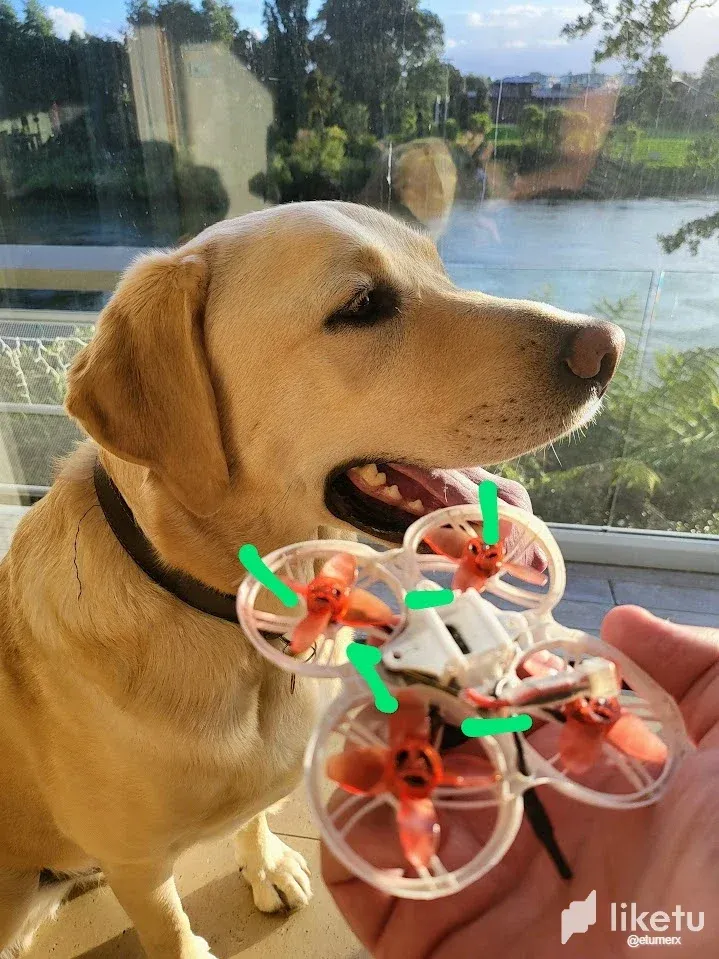
Miko the labrador (4M) loves to chase drones. This is his 6th EMax Tinyhawk III series drone, and it's sporting several cracks on the frame - marked in green. His previous owner told me that he loves to run after drones for fun. Here, he is happy after a session of drone play, looking very non-guilty. Let me tell you how this little device is an example of forces that have shaped our world since the 1980s - causing a massive improvement in living standards, creating jobs and lowering barriers of entry to economic freedom for many. I'm talking about the open-source movement.
The frame has two complete breaks in the forward part of the outframe (top) and partial breaks in three places around the central circuit housing. There are tooth marks and dried slobber all over the drone, and the camera lens is blurry too. Oh, and the propellers have tooth marks and bent blades, too. None of the motors points perpendicular to the optimal thrust plane, and the frame breaks have introduced frame "flex", especially as the drone makes a rapid directional change (where the input thrust and direction of travel are out of alignment).
Yet, remarkably, the drone still flies just fine. Why is this? A quadcopter flies because a computer takes what you want to do and what's currently happening and tells each motor individually how fast it should spin. This calculation happens thousands of times per second - faster than a single propeller rotation. It's impressive to think that such a small unit can even fly and in such terrible condition, yet it does.
I fly FPV, which means I wear goggles and see out a small camera mounted on the drone. All of the software and some of the hardware that makes all this happen is open source. The video system is open source (HDZero). The radio control link is open source (ELRS), and the flight control software is also open source (Betaflight).
Open source means that people and companies have volunteered their time to improve software and gave it away for anyone to use. Given the many thousands of hours it takes to build something so complex, the cost to build these drones would be prohibitively high and so few would be made and few sold. Now you can buy a basic FPV drone for a reasonable price.
And we see this pattern all throughout the technological world. The internet runs on open source software; most businesses' IT infrastructure includes increasing amounts of open source software, talks in open protocols, and then builds their proprietary needs on top. You can now get a cheap web server with impressive capabilities, proved by open-source software at its base.
So, when I see this drone - a drone that couldn't fly and would never have been made except for the volunteer efforts of many - it reminds me of a world made better through volunteers. People who used their skills to make the world just a little bit better for the next person.
Miko thanks them too.
